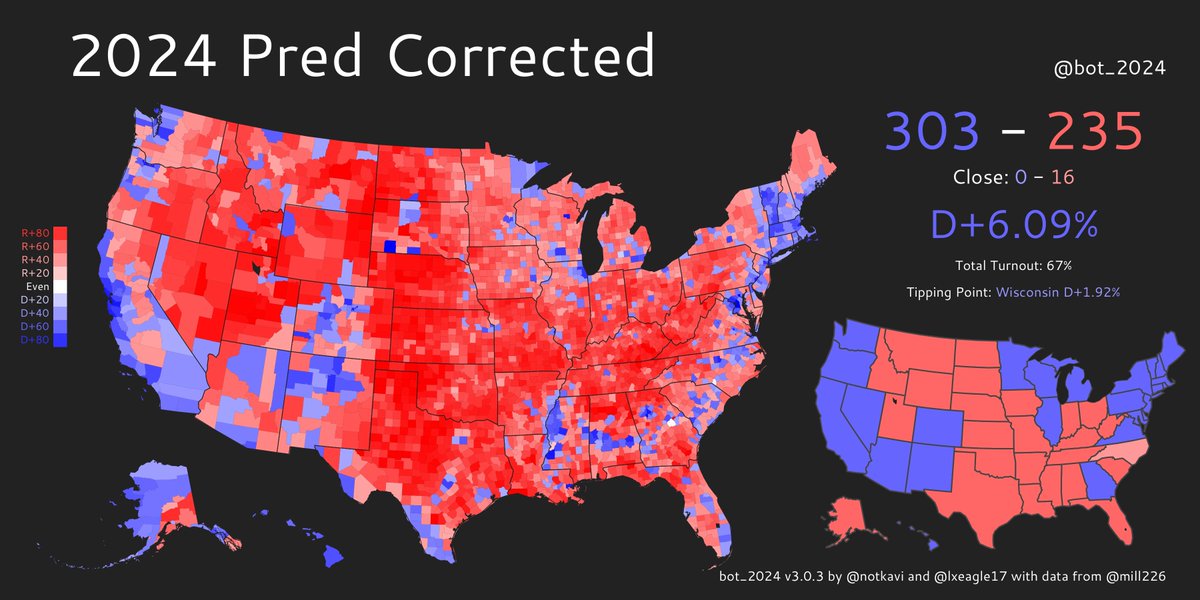
I do want to explain this in more detail, so here’s a thread:
1) this bot is centered around the 2012/16/20 elections. In that set, Democrats win the popular vote, so your median environment projected onto 2024 demographics is D-leaning. But the PV doesn’t choose the winner!
1) this bot is centered around the 2012/16/20 elections. In that set, Democrats win the popular vote, so your median environment projected onto 2024 demographics is D-leaning. But the PV doesn’t choose the winner!
https://twitter.com/EtNewbie/status/1391162853143494656
2) Democrats have seen their support vanish in many rural areas but have seen pretty consistent suburban swings towards them. So the bot naturally thinks this will continue. The way the GOP wins the PV is by suburban reversion, which, if the UK showed anything, isn’t likely.
3) The GOP coalition wins are driven by a pretty structural bias in the electoral college and one that doesn’t look like it’ll vanish for a while. It’s remarkably efficient. And do long as Texas stays redder than the nation, I don’t see that advantage going away.
Lastly, there is no consolation prize for winning the popular vote other than some sad headlines and some angry tweets. There’s absolutely no reason to have the bot sample popular vote wins when the GOP has won that exactly once since 1988. And they aren’t optimizing for that.
So if you’re a Very Online Reagan/Bush Stan mad that our bot has the GOP rarely winning the PV, just remember that the electoral college is what matters.
Just don’t pretend there’s any evidence suggesting the GOP wins the popular vote in 2024. Nothing implies that this is likely
Just don’t pretend there’s any evidence suggesting the GOP wins the popular vote in 2024. Nothing implies that this is likely
• • •
Missing some Tweet in this thread? You can try to
force a refresh







